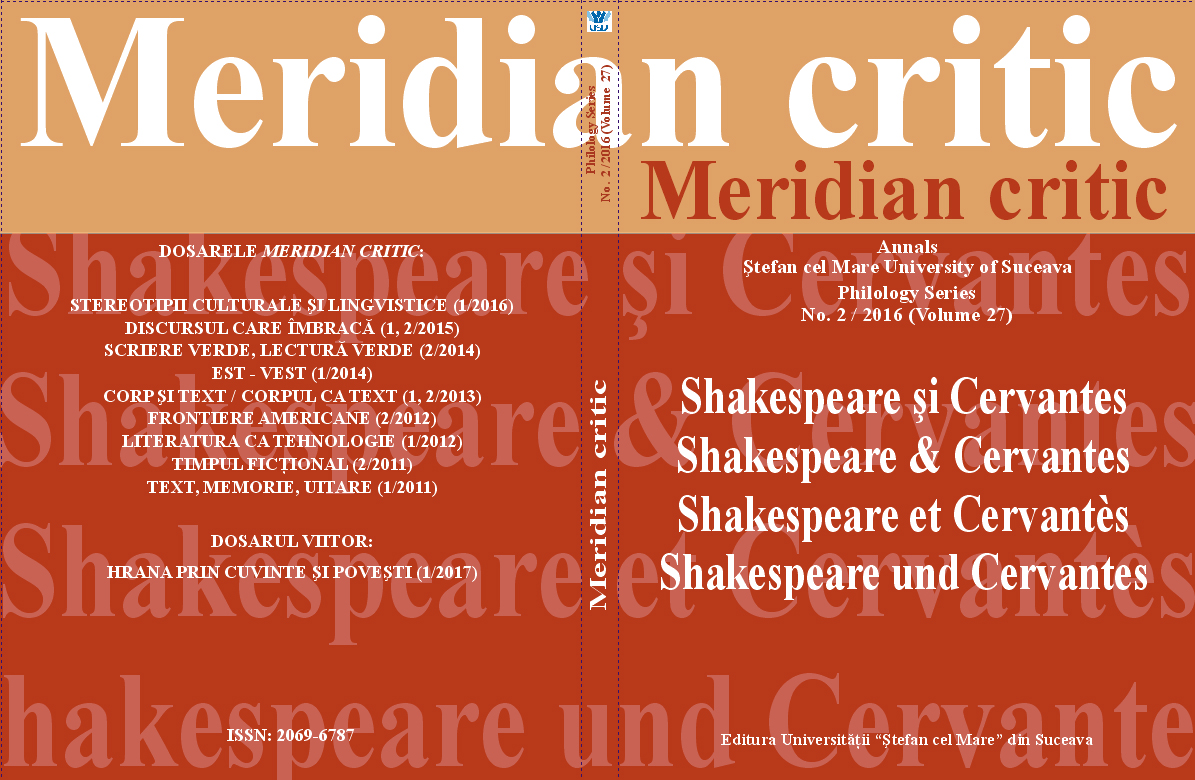Unfolding Being and Time through Poetic Beginnings
Unfolding Being and Time through Poetic Beginnings
Author(s): Doina CmeciuSubject(s): Studies of Literature
Published by: UNIVERSITATEA »ȘTEFAN CEL MARE« SUCEAVA
Keywords: Hamlet; poetic beginning; semiosis; unfolding (text and being))
Summary/Abstract: Eminescu considered that “Shakespeare must not be read, he should be studied” (1870) [Eminescu, 1870], for, in order to comprehend the complexity of his plays’ messages, one should perceive ‘the trembling of deep feelings within words’. In his lectures on Shakespeare, S.T. Coleridge repeatedly highlighted the playwright’s poetic art “of representing, in words, external nature and human thoughts and affections…” and of knowing how to communicate them in “systems of harmony” made of parts that “fit into a whole” (“The Second Lecture”, 205-206).This paper is an attempt at showing the power and function of the poetic word(s) in William Shakespeare’s texts, with reference to The Tragedy of Hamlet, Prince of Denmark. If, in his sonnets, the three quatrains metaphorically develop the ideatic universe which is conveyed by the words of the couplet, the five acts of his plays are “constructed” – to use Coleridge’s words –, in such a way “as to produce” a representation of the Renaissance being’s existence starting from a paradigm or a syntagm placed in scene 1, act I, of all his plays. Hamlet and Hamlet (both text and protagonist) are created and disclosed through the metamorphosis of the syntagm unfold yourself (I, 1, 2) from a denotative linguistic unit into a connotative system.
Journal: Meridian critic
- Issue Year: XXVII/2016
- Issue No: 2
- Page Range: 9-20
- Page Count: 12
- Language: English

